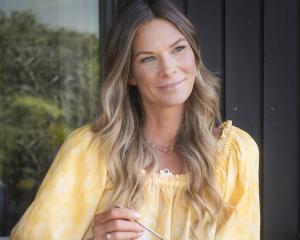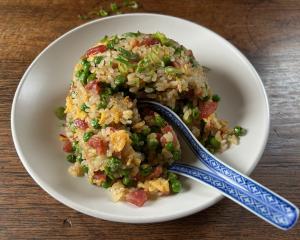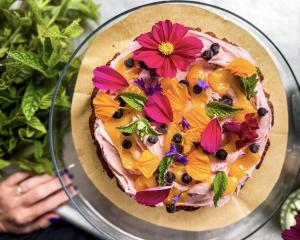Recently I had the opportunity to talk to some of the growers and taste several of their oils.
For most of the growers it is a hobby or a lifestyle business - they do it because they love the product, Mr. Stark, president of Central Otago Olive Growers, says. She is one of the growers behind Four Groves olive oil.
For others it's more of a business, but it's certainly not the ''new gold'' moneymaking venture some people predicted 15 or so years ago, says Steve Clark, of Cairnmuir Olives, who planted one of the earliest olive groves in the area.
In those days the national organisation Olives New Zealand was regarded as the first and last word on growing olives, but they were focused on the North. The generic information they offered was not always suitable for Central Otago and was not particularly helpful.
''Statements were made by the hierarchy that you'll never get good olive oils in Central Otago and that puts you on the back foot before you start,'' Mr. Stark says.
''Other growers from the North were very helpful and did give us lots of input, but we were always a bit different in Central Otago because our olive oil characters were a bit different. We are producing a savoury olive oil rather than a sweet, milder one like they do in the North Island,'' she says.
As with wine growing, Central Otago is on the edge when it comes to growing olives. An intense frost in 1997 killed some of the early trees, especially barnea, an Israeli variety widely planted in Marlborough. Now they grow Tuscan varieties such as leccino, frantoio, verdale, and minerva, which is a clone from one of the few leccino trees to survive a devastating frost in Italy in the 1990s. They also plant on north-facing slopes and have built up a body of local information and experience from which new growers can learn.
''When we started, we were all dying to hear how you prune an olive tree, and it's only now that we are actually coming to fruition. We've got our trees to the size where we can get a decent amount of olive oil, but we also have to prune them to get an annual crop. If we didn't prune them it would be hard to get a crop each year.
''The other thing we prune for here, is not just for ripeness - the fruit trees are pruned like bowls to let the light in because we have these short, intense summers. And we are pruning for wind as well. Because we don't want to be climbing up ladders, part of our philosophy is to try and keep our trees at picking height."
Because of the hard winters and dry summers the growers generally do not need to spray for disease as they do in the North. However, the cold winters can take a toll.
After another damaging frost about 10 years ago, some people panicked and picked their olives too early so it was impossible to get any oil from them.
It has taken time for people to get over that initial experience but now people leave them on the trees longer to ripen. They should be a mix of black, green and splotchy, Mr Clark says.
He was the first in the region to commission an electric olive press. A group of other growers bought an old-fashioned screw press, but found the effort and time it took to do things manually, and to clean up each day, was far too difficult, and have since also invested in an electric press.
One of the important things for olive growers wishing to sell their oil is to have it certified as extra virgin. Olives New Zealand organises certification of olive oils but it was too expensive for many of the small local growers, so the Central Otago group decided to organise their own certification process through Modern Olives, one of Australia's leading olive laboratories.
Certification involves chemical and sensory assessment and other requirements and provides a quality assurance to consumers as well as encouraging quality improvement. The Central Otago oils that have received their certification now sport a blue and gold sticker proclaiming it.
Because of the climate, Central Otago oils tend to be green, grassy and pungently peppery, savoury rather than mild and sweet as is typical of riper northern oils.
When tasting olive oils, look for a balance between fruitiness, which can be ripe or green, pungency or pepperiness which is an intense biting sensation in the mouth and throat, and bitterness, a passing sensation on the tongue owing to some greenness in the fruit.
The oils I tasted varied from dark green to gold in colour, from fruity and buttery to grassy and herbal. Some were pungent and peppery while others, depending on variety and presumably ripeness and age, were richer and softer, but pepperiness certainly seems to be a characteristic of Central Otago oils.
The pepperiness that can be disconcerting when tasting oil by itself is mitigated when complemented by food - normally you enjoy oil with bread or in a salad or drizzled on other food.











